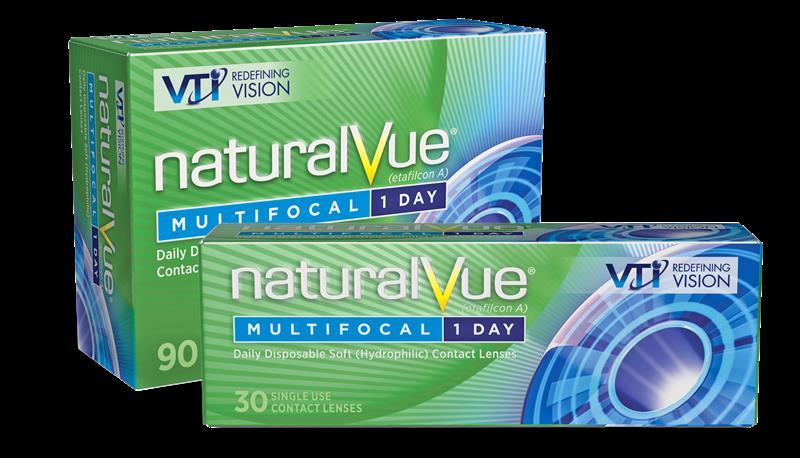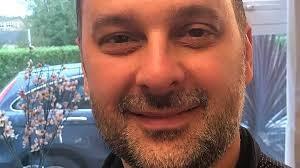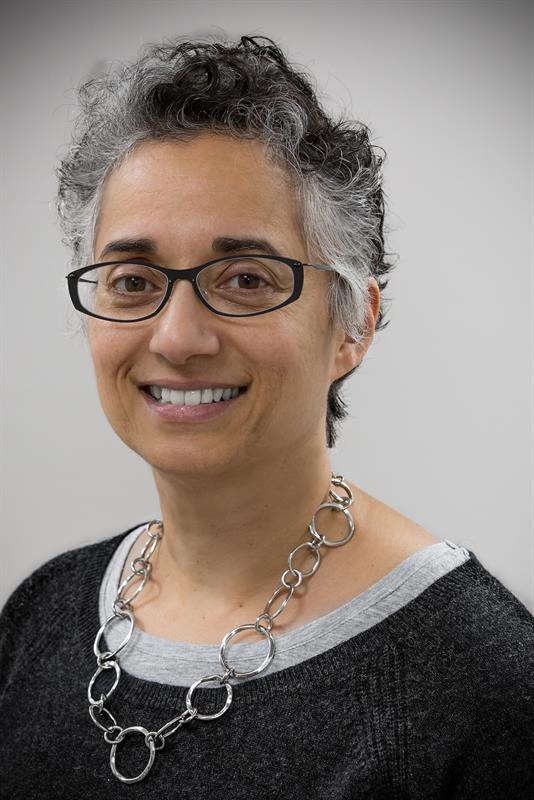
Myopia is on the rise on a global scale, notably among children at a younger age, and with the increased associated risk of sight-threatening pathologies, it’s no wonder the profession is exploring the most effective ways to manage the condition and slow its progression.
Myopia is considered to have reached epidemic levels in many countries. Some 28% of the world’s population is currently myopic, according to latest statistics,1 and without proper management, this figure could reach a staggering 50% by 2050, representing five billion people.
While the prevalence of myopia is greater in Asia in general, a relatively high prevalence has also been reported in Western countries. One study reported an eightfold increase in the number of high myopes in the United States2 over the past 35 years. It showed that the myopia prevalence for people aged 12 to 54 years increased from 25% in 1971-72 to 41.6% in 1999-2004.
Myopia is also manifesting at an earlier age, with children becoming highly myopic at earlier ages. For example, 18% of Singaporeans have reached -6.00DS by the age of seven. A UK study3 reported that the proportion of myopic children in the UK aged 10 to 16 years in 1960 was 7.2%, increasing to 16.4% for 12 to 13-year-olds from 2006-08. The study also suggested that white children are becoming myopic at a younger age.
High myopia is widely agreed to increase the likelihood of sight-threatening pathologies in later life, including cataract, glaucoma, retinal detachment and macular degeneration.4 Maculopathy alone is up to 40 times more likely with progressive myopia, according to statistics. What is more, the greater the level of myopia, the greater the risk of developing pathologies, which is why impeding the progression of myopia in children as early as possible is so
important.
Risk Factors
Genetics is an established risk factor of myopia development. A study carried out in Northern Ireland among 661 12 to 13-year-olds5 found that children with one myopic parent were 2.91 times more likely to develop myopia than children with no myopic parents, while children with two myopic parents were 7.79 times more likely to develop the condition.
Environmental factors are also agreed to play an important role with multiple studies showing that the prevalence of myopia is lower in children who spend more time outdoors in the daylight compared to those who carry out near-vision activities indoors. However, increasing time outdoors has been found to reduce only the onset of myopia and not progression.
Practitioners have a duty of care to discuss the risks of myopia with their patients, especially those with young children given the genetic link, and to investigate and offer suitable treatments. This is especially the case for high myopes with a greater chance of developing pathologies in later life. Not only is this important from an ethical perspective, it also makes good business sense. Most product manufacturers offer a range of promotional materials from websites to leaflets, for practitioners to increase patient awareness about the myopia risks and treatments.
‘As a practitioner, it is really important to talk to your patients about myopia,’ says Indie Grewal, an optometrist at Leightons Opticians in St Albans and a professional services consultant for Coopervision’s contact lens Misight 1 day. ‘It’s important that we find out whether our patients have children so that they are educated and they know there is a risk for their child,’ he says, adding: ‘If you proactively talk to parents you can give them advice – suggest that their child can spend 20 minutes on the iPad if they spend an hour outside and cement the fact that they need to come in for regular eye exams, which builds your business too.’
According to a 2016 large-scale worldwide survey among practitioners, despite concerns about increasing paediatric myopia,6 over two thirds of practitioners continue to prescribe progressing myopes single vision contact lenses or spectacles.
The reasons cited for the lack of treatment uptake ranged from concerns about inadequate information and unpredictable outcomes to limited product availability and limited access to the right equipment.
Grewal comments: ‘The public message still isn’t out there about the risks of myopia. While myopia has been a subject in journals and at conferences for some time, many practitioners still don’t know very much about it and they may not have access to a product yet. I think when more products, like Misight 1 day, are licensed, practitioners will feel more comfortable about prescribing them for myopia
management’.
Myopia Treatments
Atropine drops, orthokeratology and soft multifocal lenses are the three current main myopia management options in the UK, in addition to spectacle wear. According to one US study in 2015,7 ‘The most effective methods are the use of orthokeratology contact lenses, soft bifocal contact lenses, and topical pharmaceutical agents such as atropine or pirenzepine’, which have been ‘shown to slow the progression of myopia by approximately 50% with few risks’.
While widely prescribed in parts of Asia and South America, atropine drops are not currently licensed for use in the UK. Various studies, including the Atropine for the treatment of childhood myopia studies (ATOM1 and ATOM2) and the LAMP study, have produced encouraging results, particularly for high dose atropine, but there is still much debate about efficacy, dosage schedules and rebound effects. Side effects, including mydriasis and cyclopegia, are also off-putting and especially for use in school-age children.
As Optician’s clinical editor Bill Harvey said in his article ‘The return of the atropine’ (Optician, October 5, 2018): ‘Because of its potential toxicity, atropine has for some years now, only been available to additional supply or independent prescribing optometrists in the UK.’ And while low-dose 0.01% atropine drops have resulted in retardation of myopia progression with fewer side effects, Harvey added that ‘there remained a proportion of patients who are poor responders’.
As Dr Kate Gifford, clinical optometrist and co-founder of the website Myopia Profile, concluded in her article ‘Atropine – wonder of weak treatment’ – ‘There’s still a lot we need to learn about atropine, including any more subtle effects on binocular vision beyond amps of accommodation, ideal dosage schedules, treatment tapering and safe discontinuation. Perhaps it will work best in combination with optical treatments, as early research is beginning to indicate.’
Meanwhile, there has been a steady increase in prescribing orthokeratology contact lenses to slow myopia between 2011 and 2018. No 7’s Ortho-K contact lenses are worn at night and correct -1.00 to -5.50 with astigmatism up to -2.50. Low prescriptions may be corrected after the first night while higher prescriptions may take up to two weeks to achieve full correction. According to Katie Harrop, professional services director at No 7, the lenses change the shape of the cornea by ‘less than the width of a human hair’ to temporarily correct the patient’s myopia.
She says: ‘No 7 Eyedream Ortho-K lenses are empirically fitted using topographical maps, spectacle prescription and corneal diameter. As a side effect there is mid peripheral corneal steepening and this provides peripheral plus which is believed to slow myopia progression. Ortho-K lenses, such as Eyedream, have been shown to slow myopia progression in many studies. The International Myopia Institute White Papers,8 which were published earlier this year, summarise data from eight studies, which show slowing in axial elongation of between 30% and 63% when compared with a control group.’
On the flip side, some practitioners express concerns about microbial keratitis with overnight wear and other reports point to a rebound effect after treatment ends. Orthokeratology also requires the purchase of a corneal topographer to map the eyes, which may deter some practitioners.
 Positive Impact’s Naturalvue from Visioneering Technologies
Positive Impact’s Naturalvue from Visioneering Technologies
Several soft multi-focal contact lenses have been released over the past three years, two of which have been specifically designed and licensed as treatments to slow the progression of myopia:
• Coopervision’s one-day Misight lens has been fitted in more than 10,000 children worldwide. The lens was launched in 2017 alongside a five-year three phase multicentre study, which in its first phase showed a significant reduction in myopia progression of 59% and a 53% reduction in axial length elongation. It also showed that children who began wearing the lenses later in the study progressed at the same rate and reported excellent visual acuity. The CE-marked, soft daily disposable lens is available in powers from -0.25D to -6.00D. Described as being ‘as easy to fit as a single-vision soft contact lens, Misight does not require any ‘extra equipment or additional chair time’. Coopervision explains that ‘two treatment zones create myopic defocus with an image focused in front of the retina, to slow axial elongation, while two correction zones correct myopia in all gaze positions’.
• Another multifocal one-day contact lens launched this year by Positive Impact is Naturalvue from Visioneering Technologies. CE approved for presbyopia and myopia progression, the lens uses ‘unique and patented centre-distance optics’. The lens design creates a ‘virtual pinhole leading to an extended depth-of-focus (EDOF)’. Fitted like a single vision lens, Naturalvue has a power range from +4.00D to -12.25 and comes in 0.25D steps with an effective add of up to +3.00. For myopia progression management, the EDOF design induces peripheral myopia without compromising vision.
• A third soft multifocal contact lens to hit the UK market this year is mark’ennovy’s monthly silicone hydrogel, MYLO. Launched in April in collaboration with the Brien Holden Vision Institute (BHVI), the individually crafted silicone hydrogel lens is powered by ‘extended depth of focus technology, which slows myopia progression and supports a comfortable acclimation to the lens’. It also features ‘high water content’ and a wide range of parameters and low elastic modulus to ensure ‘excellent fit and easy handling, especially for the youngest contact lens wearers’. The lens has a power range from -0.25 to -15.00 and comes in 0.25D steps. According to the company, a big advantage of the MYLO lens is that ‘it also comes in different diameters (particularly important for growing children’s eyes) and it is available in different base curves. This gives a better fit as ‘the lens is literally made-to-measure which in turn gives better vision and comfort.’
Realistic Expectations
It is clear that with the abundance of data surrounding the risks of myopia and the increasing availability of on-label treatments, practitioners have both an opportunity and an ethical responsibility to offer patients advice and treatments. As Professor Lyndon Jones said during a presentation at a Coopervision seminar in March this year : ‘If you’re not prepared to instigate this [myopia management] in your practice then at the very least you need to let patients know where else they can go locally.’
Equally, and it is important to add, practitioners should be honest and manage patient expectations about the effectiveness of treatments from the beginning. ‘Don’t tell patients that you are going to stop their child’s myopia, instead let them know that you can slow the progression so that the eventual prescription will be less than it would be without treatment.’
Case study
Drew Thompson is an optometrist, specialist contact lens practitioner and co-owner of independent practice, Thompson and Hardwick Optometrists in Lytham, Lancashire.
 Drew Thomspon
Drew Thomspon
I have fitted many children with Ortho-K lenses over the past 15 years and as long as you choose your patients carefully the lenses are extremely successful. The lenses are easy to fit and the patient can see both with and without them so they really do forget what it is like to be shortsighted. Very few patients drop out as once fitted they feel cured of myopia.
Patients tell me that they appreciate the simple things like being able to see the alarm clock and being able to swim without the need for lenses during the day or spectacles. I offer these lenses to all eligible patients, young and old, but especially the young because of the myopia management benefits.
On a professional level, I think that we have an obligation to inform patients and their guardians about lenses in respect of myopia management. The lenses are comparable in price to premium daily disposable lenses and we, as a profession, have no problem advocating those. There seems to be this myth that Ortho-K patients are a drain on a professional’s chair time, which I think is completely unfounded. It does take some time to get a patient up and running, but once successfully fitted you hardly ever see them again. We have to remind them that we need to check for ocular abnormalities. I haven’t needed to promote the lenses as I get a lot of word-of-mouth patient enquiries, but if needed, the manufacturers can offer significant support with promotion. Start offering these lenses – they will wow you and your patients.
Case study
Joy Hynes is an optometrist and practice owner of Hynes Optometrists in Ealing, London.
 Joy Hynes
Joy Hynes
I have been interested in myopia control since hearing about it 11 years ago. In May 2018 I was able to start fitting young myopes with Misight, which the parents really embraced as the one-day modality reduces their worry about proper lens hygiene. In April 2019 again I was excited about the new lens on the market – Naturalvue. I have not had this lens for long enough to comment accurately on its effect on the myopia, but the children who are wearing this lens comment on the good comfort and clear vision. The big advantage of Naturalvue is that it corrects up to 1D of astigmatism and in some instances even more. This means children with astigmatism have the opportunity to try this lens in the first instance and if it gives them good vision then we don’t need to look elsewhere. We also fit our young myopes using Ortho-K and have had very good results with this too. Deciding which child will accept which form of myopia control is key to their success with wearing contact lenses, and hopefully keeping their myopia in check.
Our youngest child wearing contact lenses is seven years old. If the children and the parents are willing, then it is our job to meet their needs. Knowing the health implications to the retina of myopia even at low levels and of course much worse in high myopia we have a responsibility to do whatever we can to reduce the progression of myopia. Even though it’s still in its infancy if we don’t do something now then we have failed to act in the best interests of our young patients. Change can be daunting for some, others are very doubtful of the efficacy of certain treatments, and this may be what stops them from embracing new ideas. Once you take the first step and see how rewarding it is, you will wish you had started sooner.
Resources
• The Brien Holden Vision Institute
https://brienholdenvision.org/
• The Centre for Ocular Research and Education (CORE)
https://core.uwaterloo.ca/
• Myopia Profile
https://www.myopiaprofile.com/
•The Global Myopia Centre
https://globalmyopiacentre.org/
• Myopia Prevention
http://www.myopiaprevention.org/.
• My Kids Vision
https://mykidsvision.org/en-us
References
1 Holden BA, Fricke TR, Wilson DA, Jong M, Naidoo KS, Sankaridurg P, Wong TY, Naduvilath TJ, Resnikoff S, Global Prevalence of Myopia and High Myopia and Temporal Trends from 2000 through 2050, Ophthalmology, May 2016 Volume 123, Issue 5, Pages 1036–1042.)
2 Vitale et al Increased Prevalence of Myopia in the United States between 1971-192 and 1999-2004. 2009.
3 McCullough SJ et al Six Year Refractive Change among White Children and Young Adults: Evidence for Significant Increase in Myopia among White UK Children 2016.
4 Younan C et al. Myopia and incident cataract and cataract surgery: the blue mountains eye study. Invest Ophthalmol Vis Sci. 2002 Dec; 43(12):3625-32
5 Rudnicka and colleagues The Northern Ireland Childhood Errors of Refraction (NICER) study 2015 – 661 white children age 12-13 years
6 Wolffsohn et al 2016 Global trends in myopia management attitudes and strategies in clinical practice.
7 Smith and Walline, Controlling myopia progression in children and adolescents 2015, The Ohio State University College of Optometry, Columbus, OH, USA.
8 ‘Myopia Management – delivering results’ Professor Lyndon Jones,19th March 2019, Coopervision contact lens seminar.
